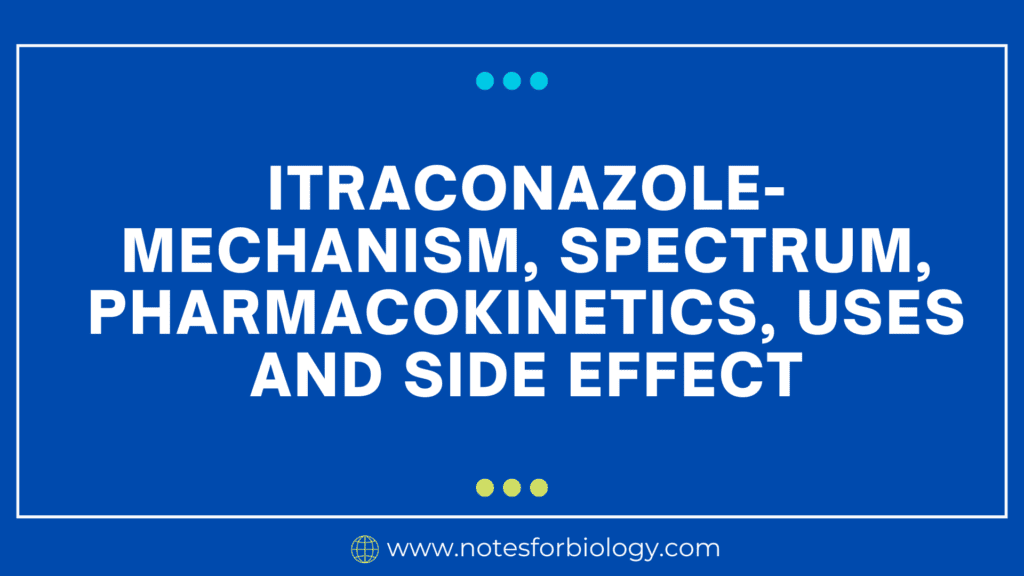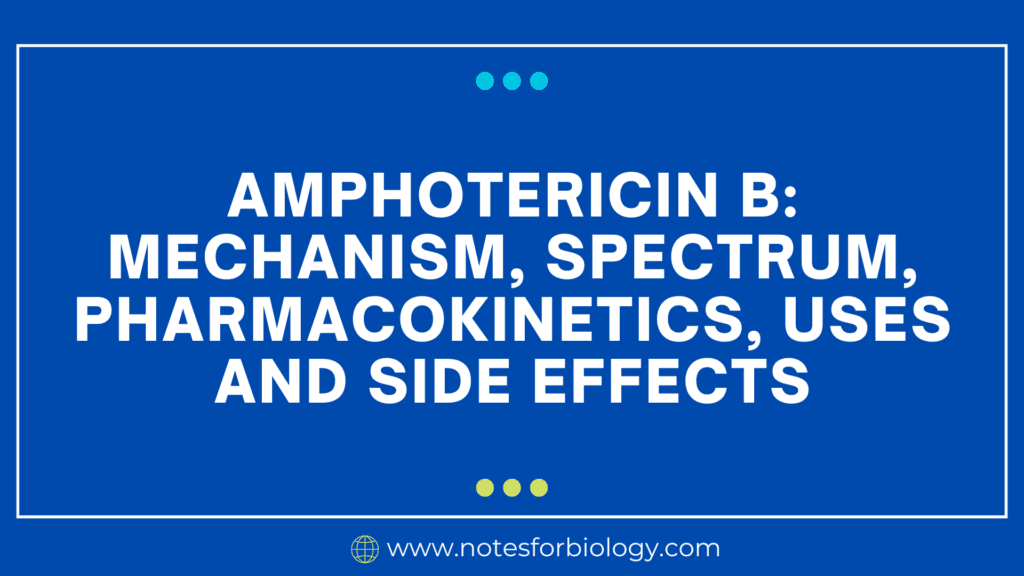Itraconazole is a triazole antifungal medication used to treat various fungal infections. It works by inhibiting the synthesis of ergosterol, a vital component of fungal cell membranes.
Table of Contents
Itraconazole-mechanism
Itraconazole is an antifungal medication that belongs to the triazole class. It exerts its antifungal effects primarily by inhibiting the synthesis of ergosterol, a key component of the fungal cell membrane.
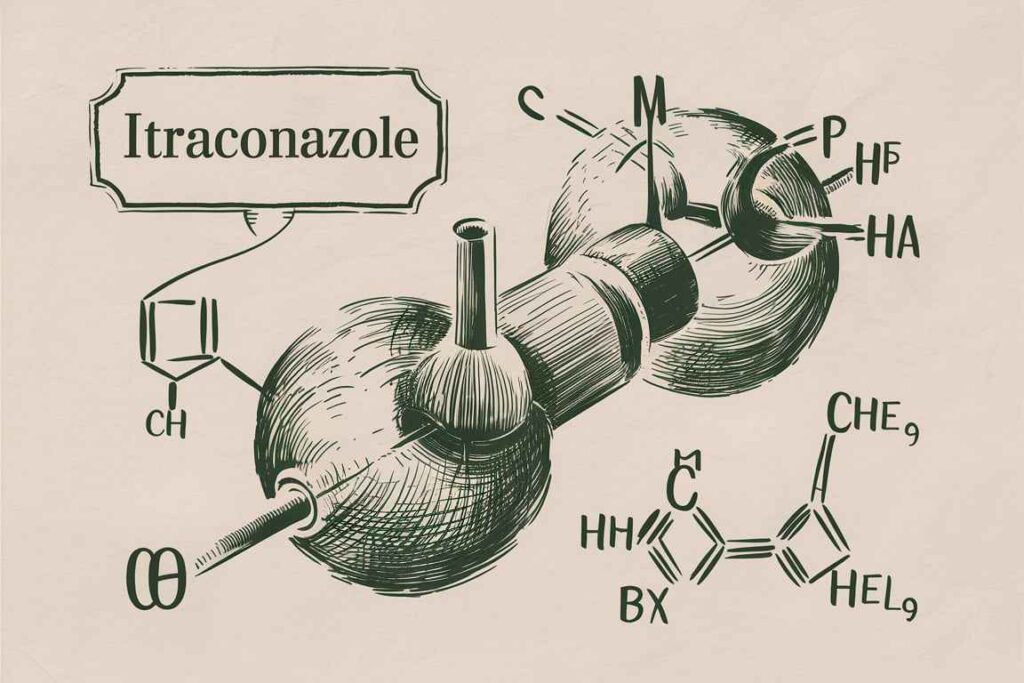
Mechanism of Action
Inhibiting Ergosterol Synthesis:
Itraconazole targets lanosterol 14α-demethylase, a fungal enzyme responsible for converting lanosterol to ergosterol.
Ergosterol is a key component of fungal cell membranes.
Itraconazole impairs the integrity and function of cell membranes by blocking ergosterol synthesis, resulting in increased membrane permeability, cell lysis, and, eventually, fungal cell death.
Spectrum of activity
Broad-spectrum Antifungal:
Effective against fungi such as Trichophyton, Microsporum, and Epidermophyton.
Yeasts include Candida albicans and Cryptococcus neoformans.
Molds include Aspergillus species.
Dimorphic fungi include Histoplasma capsulatum, Blastomyces dermatitidis, and Coccidioides immitis.
Pharmacokinetics
Absorption:
Itraconazole is best absorbed under acidic conditions.
Oral bioavailability is increased when taken with meals.
Absorption might vary; oral solutions are more readily absorbed than capsules.
Distribution:
Widely dispersed in tissues, especially keratinous tissues such as skin and nails.
Highly lipophilic, with excellent penetration into fatty tissue.
The medication settles in the stratum corneum, nails, and sebum.
Metabolism:
The cytochrome P450 enzyme system, notably CYP3A4, catalyzes extensive metabolism in the liver.
Elimination:
Primarily removed by the biliary system (bile and feces).
A small amount is eliminated in the urine.
Uses of Itraconazole-mechanism
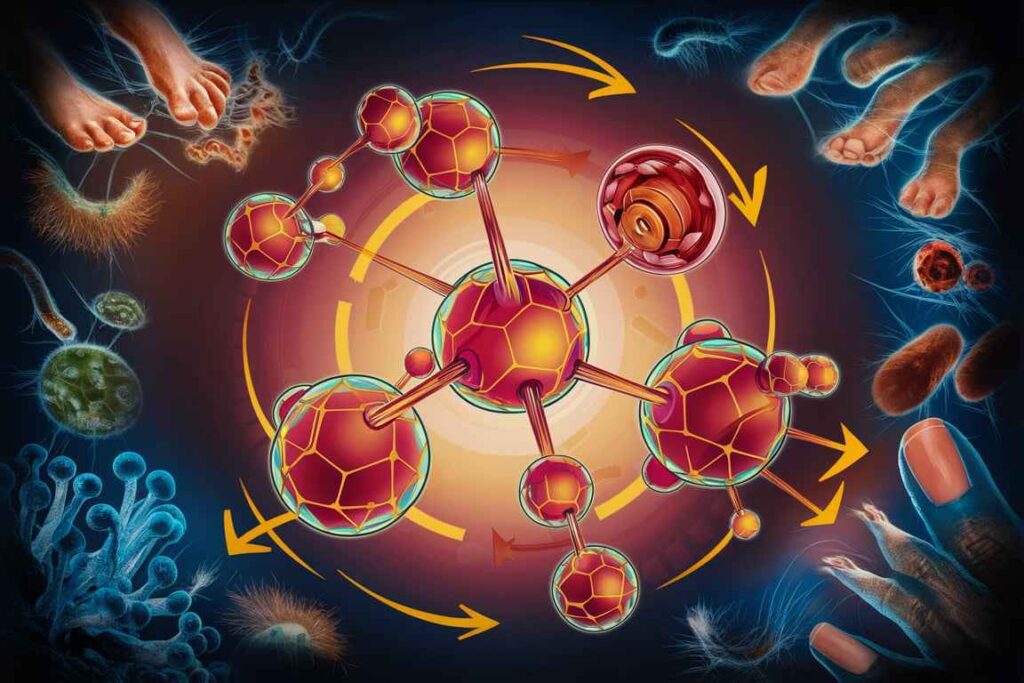
1. Dermatophytosis (tinea infections):
Mechanism: Itraconazole suppresses the formation of ergosterol, which is required for fungal cell membrane stability. This disrupts the cell membrane and causes fungal death.
Conditions Treated:
Tinea corporis, often known as body ringworm
Tinea cruris (Jock itch)
Tinea Pedis (athlete’s foot)
Tinea Capitis (Scalp Ringworm)
Onychomycosis (a fungal nail infection)
2. Candidiasis:
Mechanism: Itraconazole inhibits ergosterol synthesis, which damages the cell membrane of Candida species, blocking growth and proliferation.
Conditions Treated:
Oropharyngeal candidiasis (thrush).
Esophageal candidiasis.
Vulvovaginal candidiasis
2. Aspergillosis:
Mechanism: Itraconazole disrupts the cell membrane integrity of Aspergillus species, limiting growth and resulting in cell death.
Conditions Treated:
Invasive Aspergillosis.
Chronic pulmonary aspergillosis.
3. Sporotrichosis:
Itraconazole works by interrupting ergosterol production to treat Sporothrix schenckii infections.
Condition Treated:
Lymphocutaneous Sporotrichosis
4. Histoplasmosis:
Itraconazole suppresses the growth of Histoplasma capsulatum by destroying its cell membrane.
Condition Treated:
Chronic pulmonary histoplasmosis.
5. Blastomycosis:
Itraconazole works by inhibiting ergosterol synthesis to treat Blastomyces dermatitidis infections.
Condition Treated:
Pulmonary and diffuse blastomycosis.
Common side effects
- It include gastrointestinal disorders such as nausea, vomiting, diarrhea, and abdominal pain.
- Headache.
- Dizziness.
- Rash.
Serious Side Effects
- Hepatotoxicity includes elevated liver enzymes, jaundice, hepatitis, and, in rare cases, liver failure.
- Cardiovascular: Risk of congestive heart failure (particularly in people with pre-existing heart problems).
- Peripheral neuropathy develops after extended use. Endocrine: hypokalemia.
- Allergic Reactions: Although rare, anaphylaxis can occur.
Drug Interaction:
- Itraconazole is a strong CYP3A4 inhibitor, which can lead to a variety of medication interactions.
- Can raise plasma levels of medications metabolized by CYP3A4, such as some statins, benzodiazepines, and antiarrhythmics.
- Co-administration with medications that lower gastric acidity (e.g., proton pump inhibitors, H2 antagonists, and antacids) may diminish absorption.
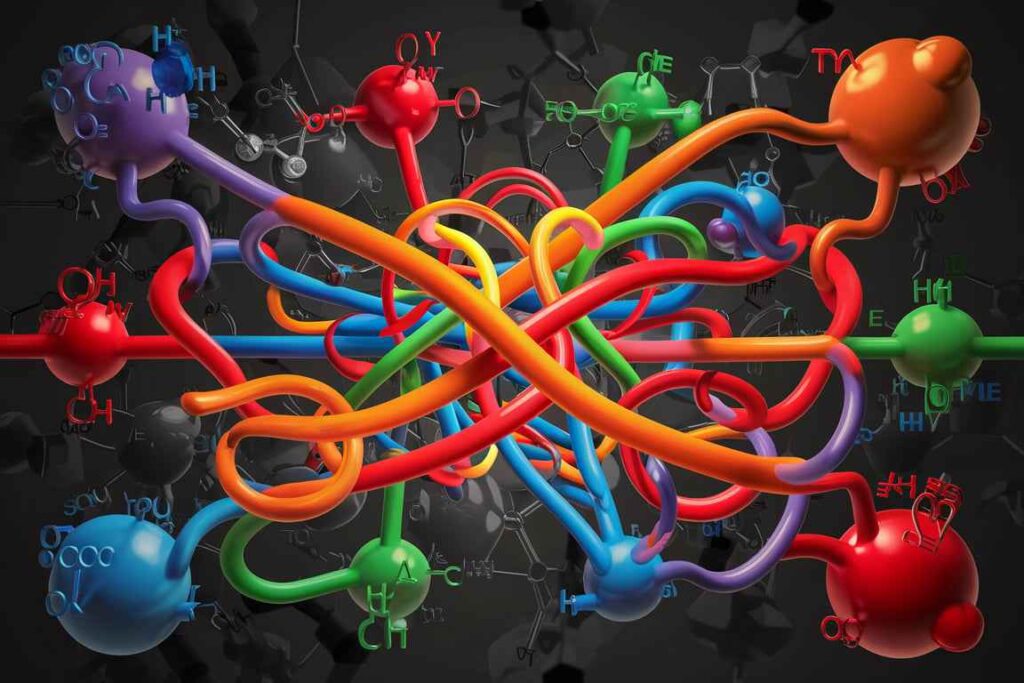
Frequently Asked Question
What is Itraconazole-mechanism ?
Itraconazole is an antifungal medication that belongs to the triazole class. It exerts its antifungal effects primarily by inhibiting the synthesis of ergosterol, a key component of the fungal cell membrane.
What are the Uses of Itraconazole-mechanism ?
The Uses of Itraconazole-mechanism are
1. Dermatophytosis
2. Candidiasis
3. Aspergillosis
4. Sporotrichosis
5. Histoplasmosis
Related Article
Tinea (Pityriasis) versicolor: etiology, clinical manifestations diagnosis and treatment

